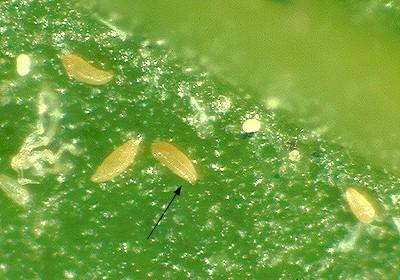Key points
- Adult eriophyid mites are very small (<1mm). A hand lens is needed to see them.
- They are spindle-shaped, with four legs and may be white, yellow or orange.
- There are several generations a year.
- They overwinter in bark crevices and under bud scales.
- Some species feed on the leaf surfaces of both deciduous and needled evergreen trees causing the foliage to turn olive-tan.
- Others cause leaf galls (some appear fuzzy) on beech, leaf blisters on pear, or damage buds of yew and flowers of ash.
- Eriophyid mites may cause witches’-broom galls in hackberry, Scotch pine, and poplar.
- They are the main vector of rose rosette disease.

Eriophyid mites. Photo: John Davidson, University of Maryland

Felt-like leaf gall on river birch caused by an eriophyid mite. Photo: Steven Katovich, Bugwood.org
Management
- To check for eriophyid mites, look for off-color foliage, leaf or bud abnormalities.
- Use a 10X or 20X hand lens.
- Large mite populations often produce many elongate, white shed skins.
- Plants with a history of eriophyid mite damage should receive a dormant oil spray to kill overwintering stages.
- To prevent heavy gall infestations, spray with horticultural oil at bud break (summer rate).
- Leaf feeding mites can be controlled with a spray of horticultural oil (summer rate) whenever they reach damaging levels. Check horticultural labels carefully for instructions and safety precautions.
Rev. 2020
